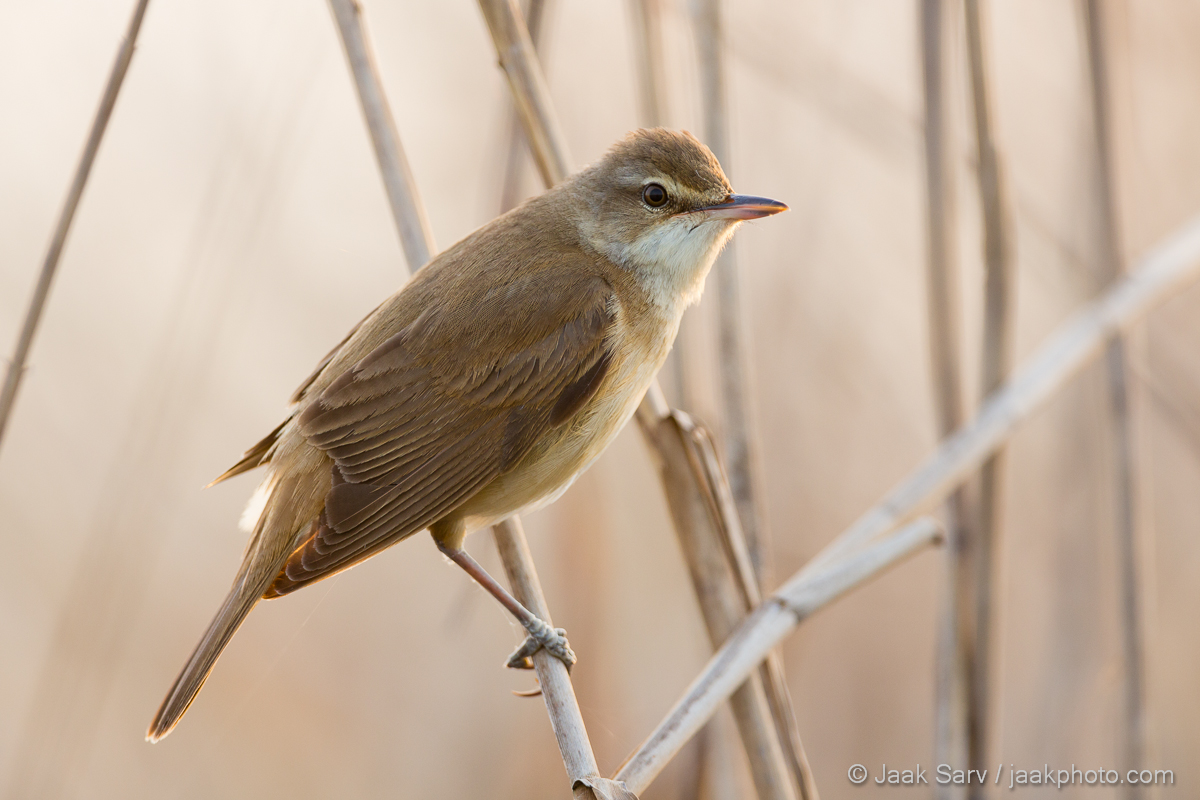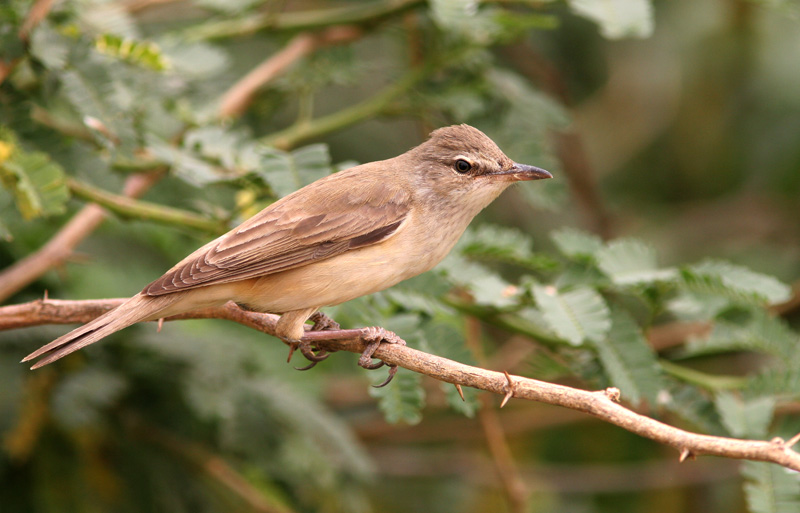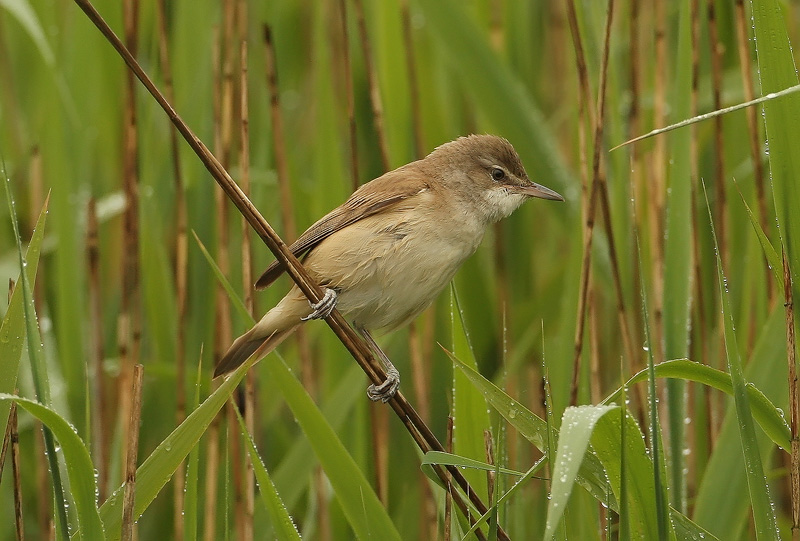
Acrocephalus arundinaceus
SUBFAMILY
Sylviinae
TAXONOMY
Acrocephalus arundinaceus Linnaeus, 1758. Subspecies griseldis
Hartlaub, 1891.
OTHER COMMON NAMES
French: Rousserolle turdoпde; German: Drosselrohrsдnger;
Spanish: Carricero Tordal.
PHYSICAL CHARACTERISTICS
7.5–7.9 in (19–20 cm); 0.7–1.8 oz (21–51 g). Large, heavy warbler
with strong bill and legs, longish pointed wings. Uniform
brown above, whitish below, with buffy wash on flanks, rufous
rump, light eyeline.
DISTRIBUTION
Breeds from Iberia and northwest Africa to western Siberia and
west China. Winters across sub-Saharan Africa.
HABITAT
Reedbeds and other emergent vegetation, sometimes in thickets
bordering water. Swamps, stream courses and savanna in winter.
BEHAVIOR
Movements slow and clumsy. Song deep and slow, full of low
croaks and rattles. Male defends large territory.
FEEDING ECOLOGY AND DIET
Insects, spiders, snails, small vertebrates (fish and frogs), some
fruits in non-breeding season. Forages in emergent vegetation,
trees and shrubs, and water surface.
REPRODUCTIVE BIOLOGY
Many polygynous, but significant portion monogamous. Pair
bond lasts only until nestling stage. Nest is built by female;
deep cylinder of reeds and leaves, suspended above water.
Three to six eggs incubated 14 days by female; young fed by
both parents; fledglings dependent additional two weeks.
CONSERVATION STATUS
Not threatened.
SIGNIFICANCE TO HUMANS
None known.
Photo Gallery of - Great reed warbler




 Animalia Life
Animalia Life